Fascinated with Cold War small arms design?
The Kalashnikov is the most famous…and now it’s time for its long boi version.
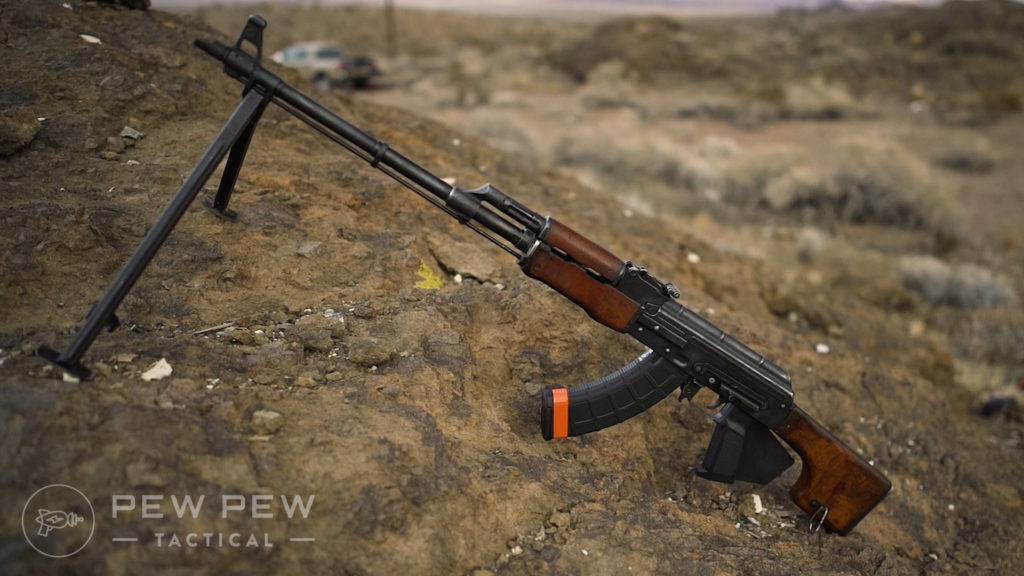
When we had a chance to checkout the Soviet solution to an AK-style squad automatic weapon, it should come as no surprise that we jumped at the opportunity!
Check our our full video review:
And be sure to subscribe to our YouTube channel for the newest reviews every week.
Table of Contents
Loading…
But First, Some History
We generally find giving a bit of background context to set the stage is useful in understanding the importance of any historically relevant gun we cover – in this case, we’ll be exploring the origins of the Soviet RPK before we dive into the nitty gritty of Atlantic’s Romanian iteration.
It’s the early 1960s, and the Soviet military is looking to standardize their small arms and infantry weapons, as most militaries of the time were. The concept of the squad automatic weapon is a relatively new one.
While guns like the Madsen were the first to be employed in this role, most fully automatic support style weapons were still chambered in full size rifle cartridges and required one or more assistant gunners to be utilized effectively.
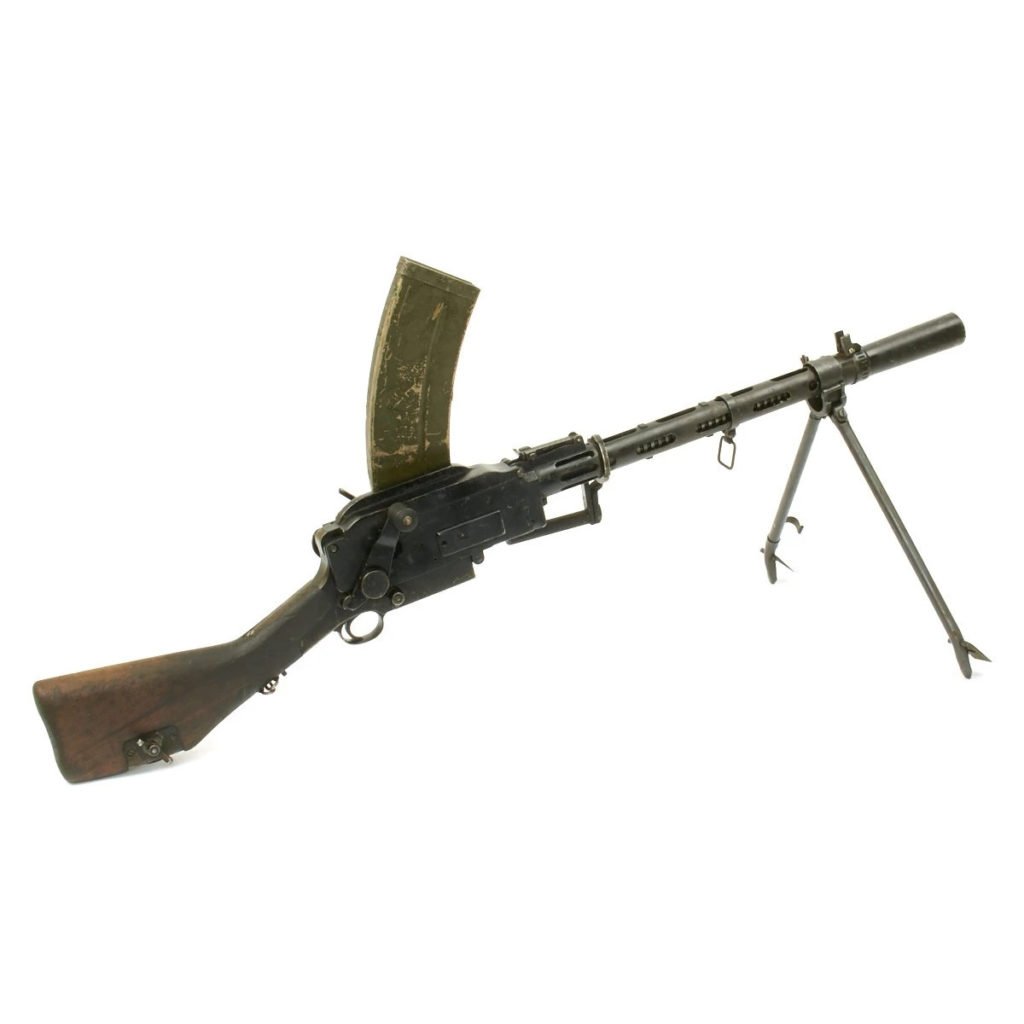
The American BAR is another step in a similar direction, although notably it was still limited to 20 round box magazines and obviously was still chambered in .30-06.
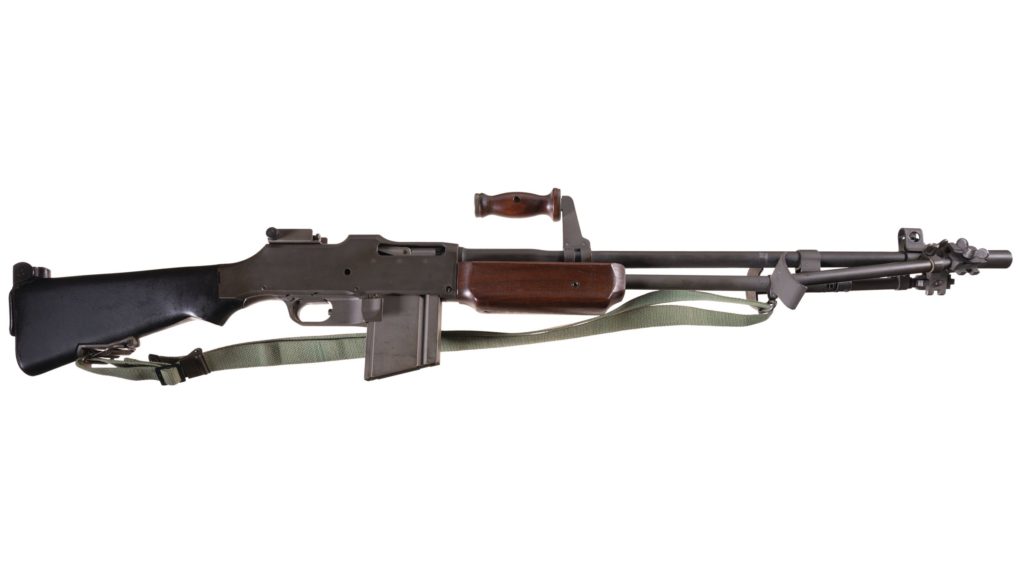
The point being that many modern militaries began to understand the importance of having a highly mobile source of automatic fire integrated into infantry squads and fireteams.
Fast forward to late WW2 and firearms designer Vasily Degtyaryov had finalized plans for the Ruchnoy Pulemyot Degtyaryova – or, Degtyaryov’s light machine gun – the Soviet RPD.
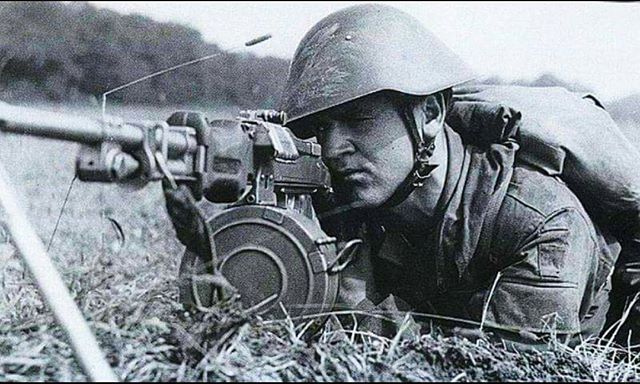
Designed to replace the DP28, the Soviet RPD was one of the world’s first belt fed machine guns chambered in an intermediate rifle cartridge – utilizing the same 7.62×39 round as the AK-47, essentially making it a precursor to the modern squad automatic weapon.
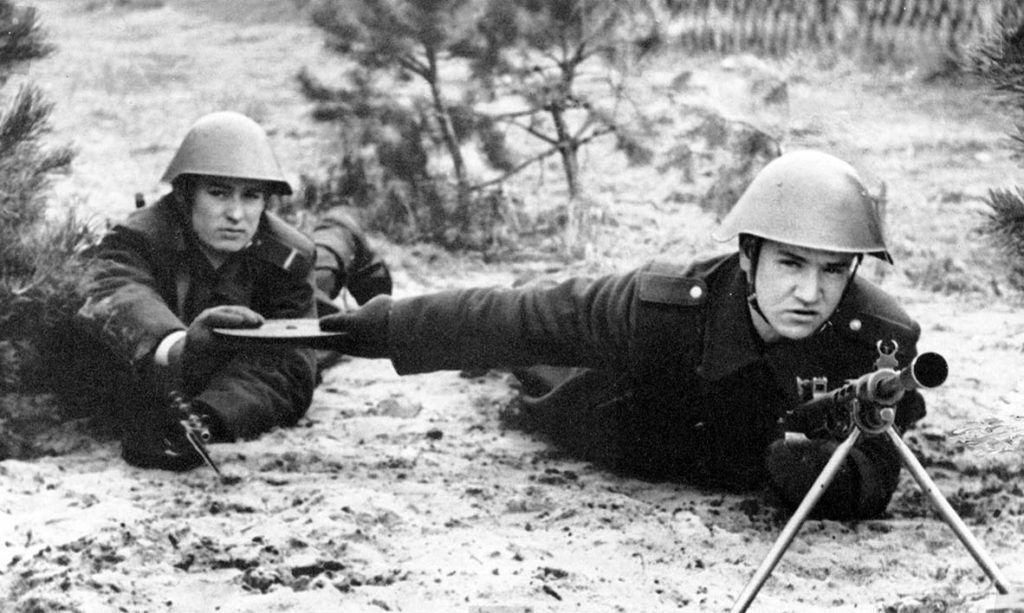
The RPD saw substantial use throughout the cold war’s numerous proxy fights, but was eventually replaced during a bid for parts and training standardization by Kalashnikov’s RPK during the early 1960s.
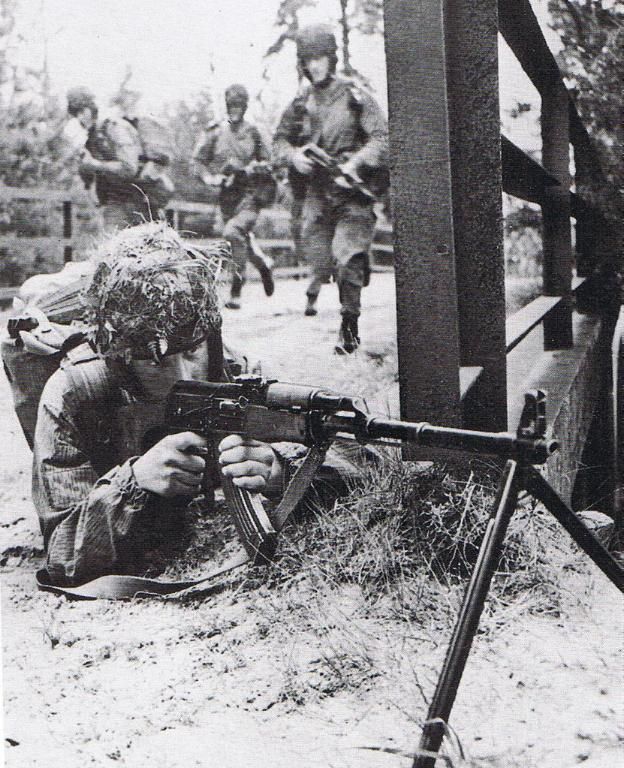
The RPK itself is essentially a beefed up AKM – introducing a thicker receiver and heavier barrel to stand up to sustained automatic fire, and ditching the under barrel cleaning rod for a deployable bipod as well.
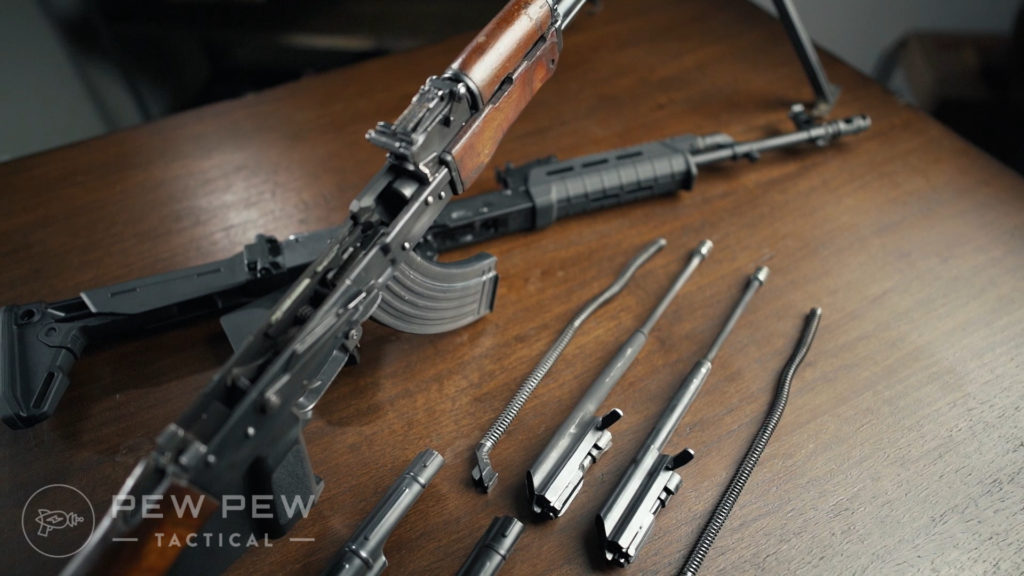
The RPK utilized the same bolt and bolt carrier found on all AK series rifles, as well as the familiar fire controls located on the right side of the receiver.
Essentially, the RPK is just a bigger AK, and if you’re concerned with making sure that your peasant conscript army doesn’t get confused with learning and memorizing the function and layout of all of your infantry weapons, the standardization makes a ton of sense.
The RPK also ditched the RPD’s belt fed system and introduced longer, 40 round magazines or 75 round drums – meaning that the gun could be fed from the rest of the squad’s normal AK magazines if needs be.
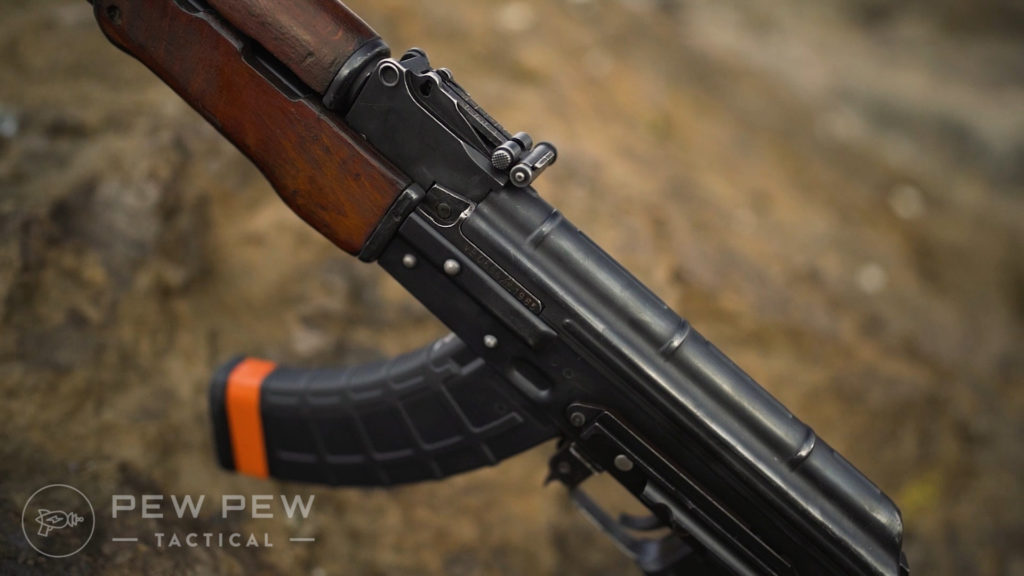
The Rifle Itself – Romanian MD-64 RPK
So where’s that leave our Romanian blaster?
As a former Soviet satellite state, Romanian arms manufacturer Fabrica de Arme Cugir produced RPK clones locally known as the MD-64 using the original Soviet specifications.
Atlantic’s RPK is assembled by M13 industries, and is built on hand selected MD64 parts kits – utilizing entirely original Romanian made parts mated with a US-made Childers Guns receiver, Green Mountain Chrome lined RPK barrel, and ALG fire control group.
Prices accurate at time of writing
Prices accurate at time of writing
-
25% off all OAKLEY products - OAKLEY25
Copied! Visit Merchant
The gun is billed as a ‘battlefield pickup’, meaning that the American made parts have been artificially weathered to closely match the surplus aesthetic of the parts kits themselves, and honestly the gun looks great!
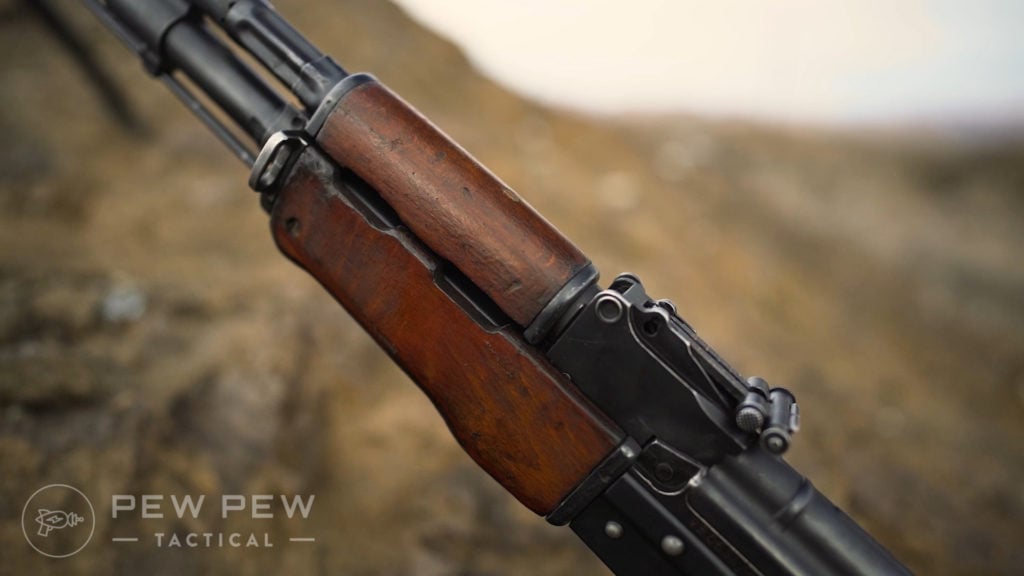
Slightly anachronistically, the gun also includes a dovetail optics rail mounted on the left side of the receiver, and an AKM style slant muzzle brake.
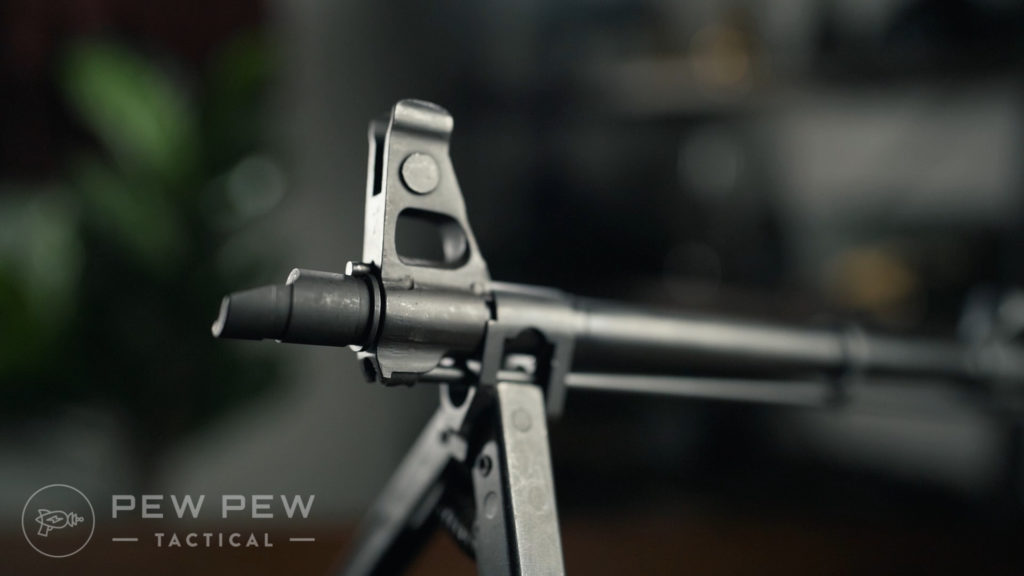
Because Soviet small arms designations are an absurd Kafka-esque nightmare, this would technically make the gun an RPKL – as the -L suffix denoted that the gun included a dovetail rail specifically intended for the NSP-3 night vision optic.
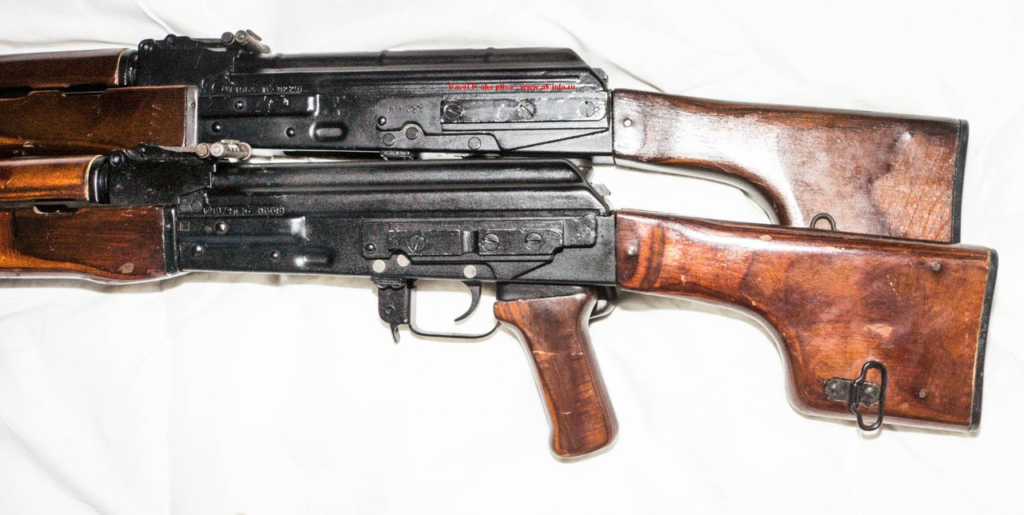
The dovetail will fight most standard AK side rail mounts and other purpose-built optics meant to utilize it, however, such as our Midwest Industries mount, and the Russian-made PSO or Kobra sights.

Off To The Range!
Firing the RPK is an absolute blast! Although the gun is obviously devised as a support weapon and ours is locked to semi-automatic, burning through a mag on a longboi with a bipod still gives us that distinctive warm and fuzzy feeling.
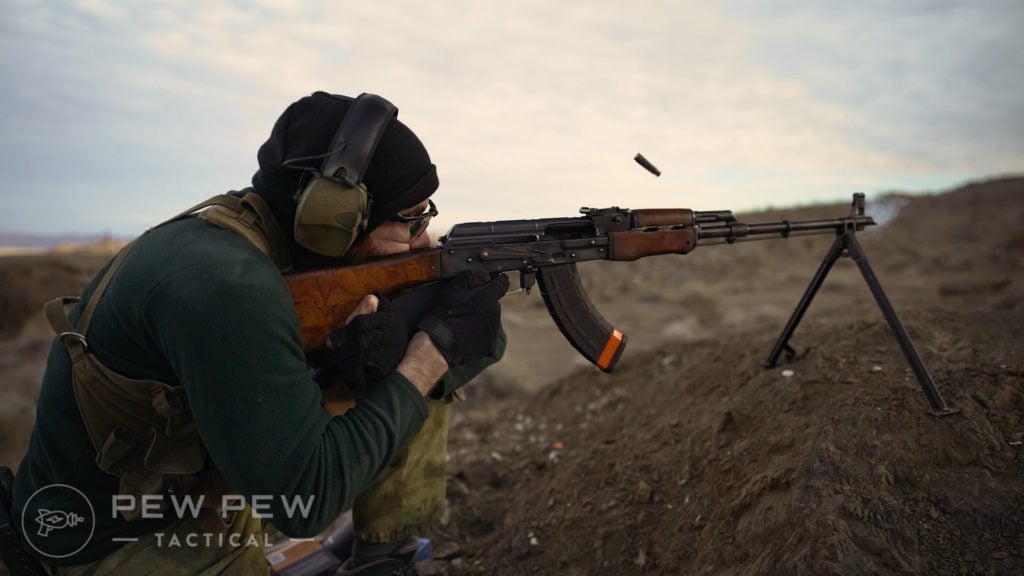
While quite simple, the bipod does its job admirably. When not in use, it locks in place underneath the barrel via a small locking latch.
To deploy it, you release the latch and let the springs do their magic – opening the bipod legs enough to allow them to swivel forward and lock into place beneath the front sight block.
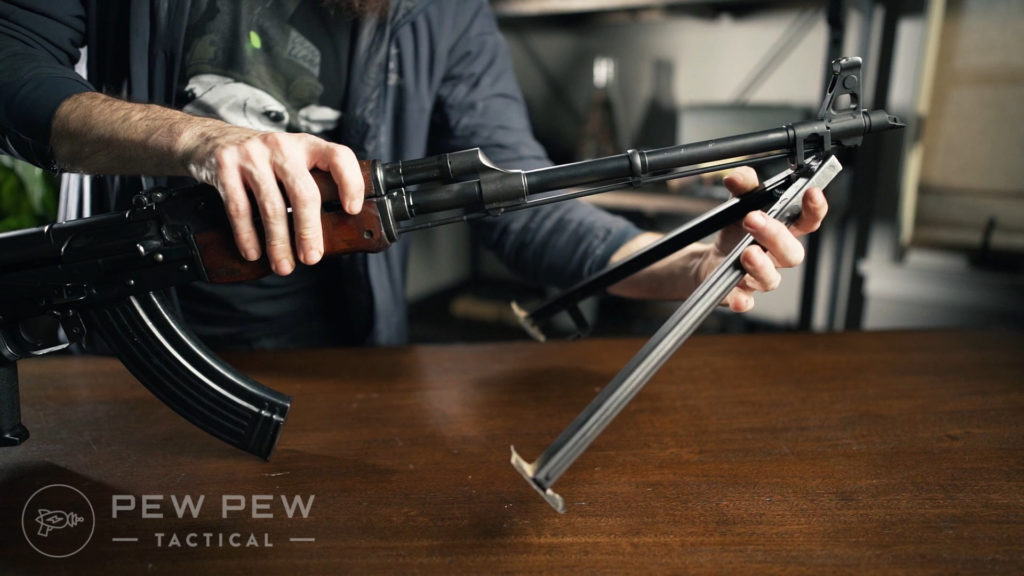
You’ve got a tiny bit of traverse, but the bipod itself doesn’t have much swivel functionality, so you’ll have to physically move the gun to engage different targets laterally.
The sights themselves are what you’d expect from an AK patterned rifle, with the notable addition on the RPKs of a knob that controls windage. Why the Soviets thought you’d need specific windage adjustment on a gun meant for suppressing and saturation fire, we’re not sure, but hey! It’s neat.
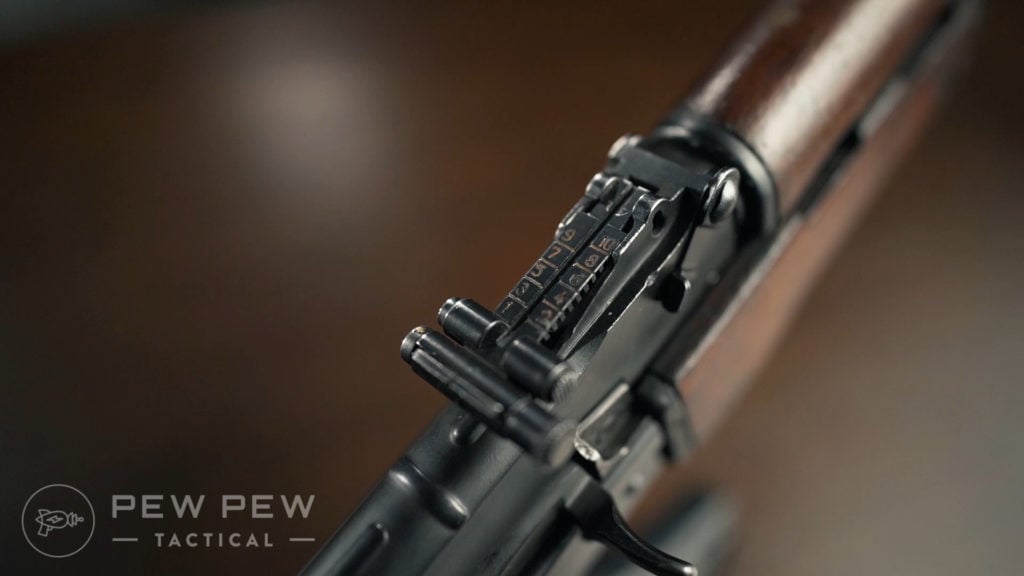
Our particular RPK is comprised of matching 1965 dated stamps throughout, which is neat knowing that this rifle and all of its parts kit components have lived together in one iteration or another for 50 some odd years.
The wood featured on the handguards and stock are beautifully stained and full of patina and character.
A particular aesthetic gripe of ours is the weird blonde and deep red stains we see on a lot of American made AKs – whereas the actual Combloc stuff tends to be much less flashy, especially when it’s beat to shit through years of use.
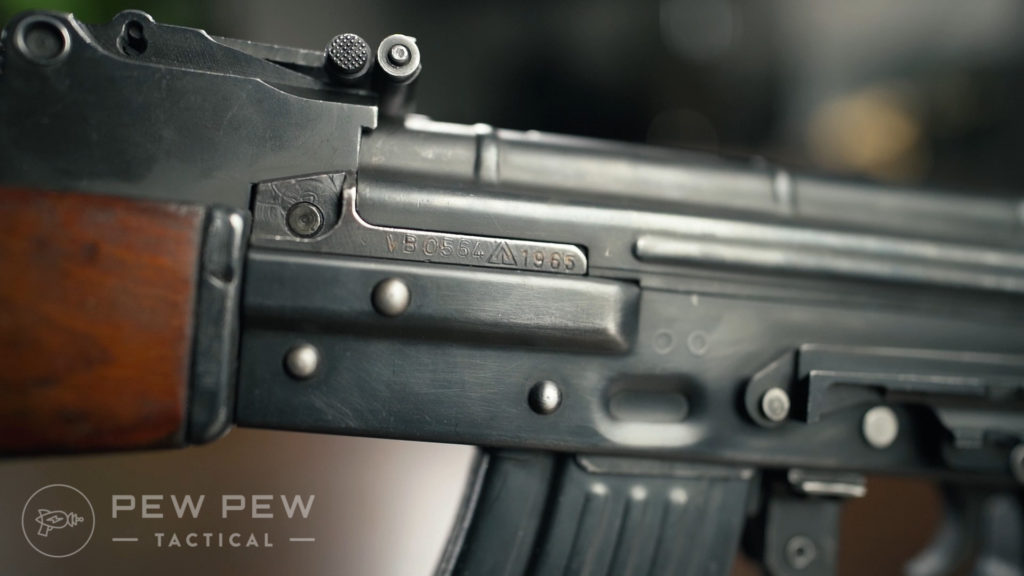
One… sort of disconcerting part of the handguards is what might be several ‘notches’ cut into the right side of the upper handguard itself.
You can draw your own conclusions as to what that might mean, and they may just be innocuous wear marks unrelated to creepy kill counts, but combined with the fact that the Romanian military would have only ever deployed this in anger to put down the December of ’89 revolution and… well, yikes.
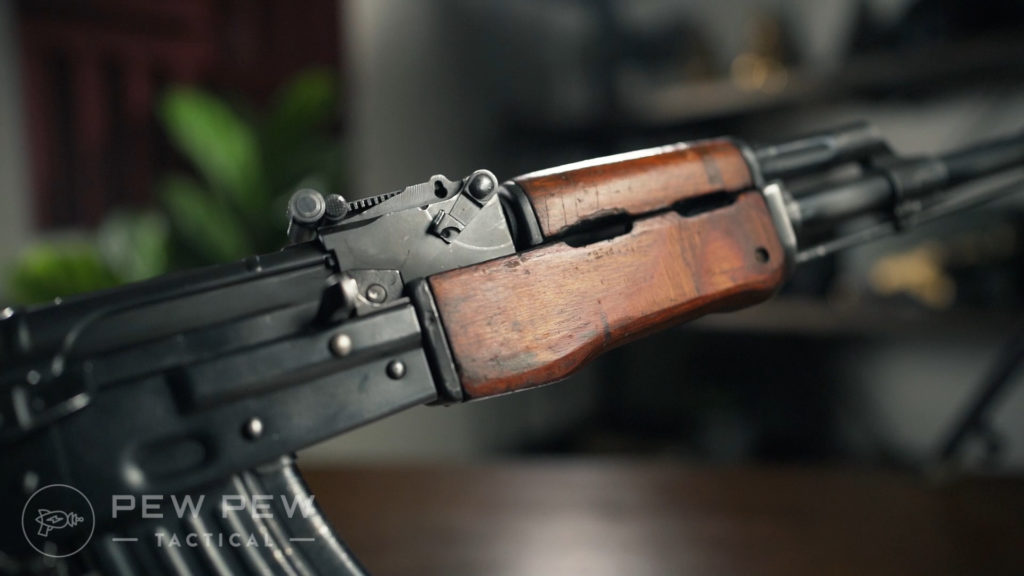
The gun’s got the iconic RPK clubfoot stock in the rear as well, which includes a steel buttplate with a compartment for stowing a cleaning kit.
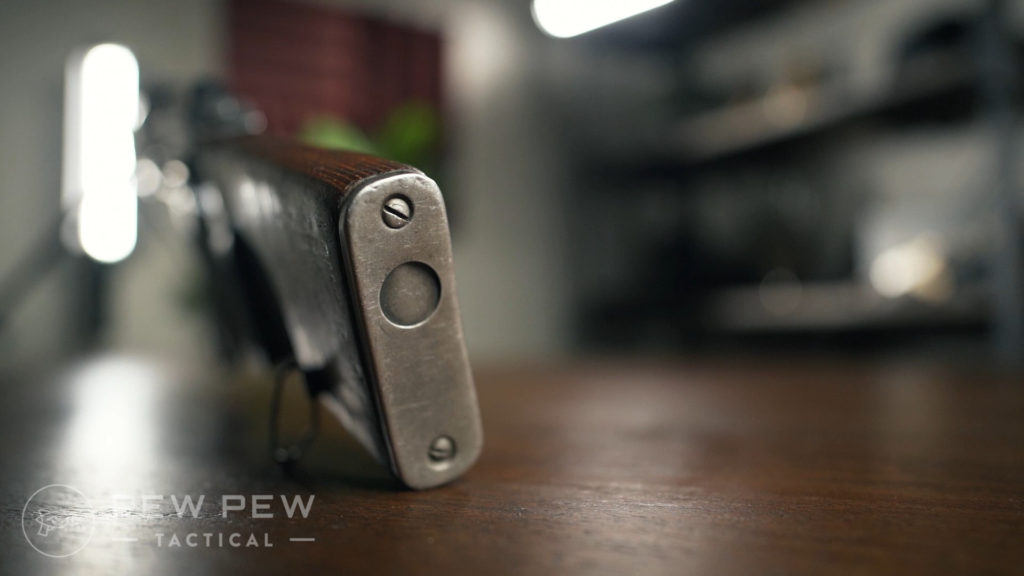
The stock is obviously designed to maximize stability when shooting from the prone, and as is common with a lot of soviet weaponry from the era, feels absolutely odd when trying to fire while standing with anything close to a modern grip.
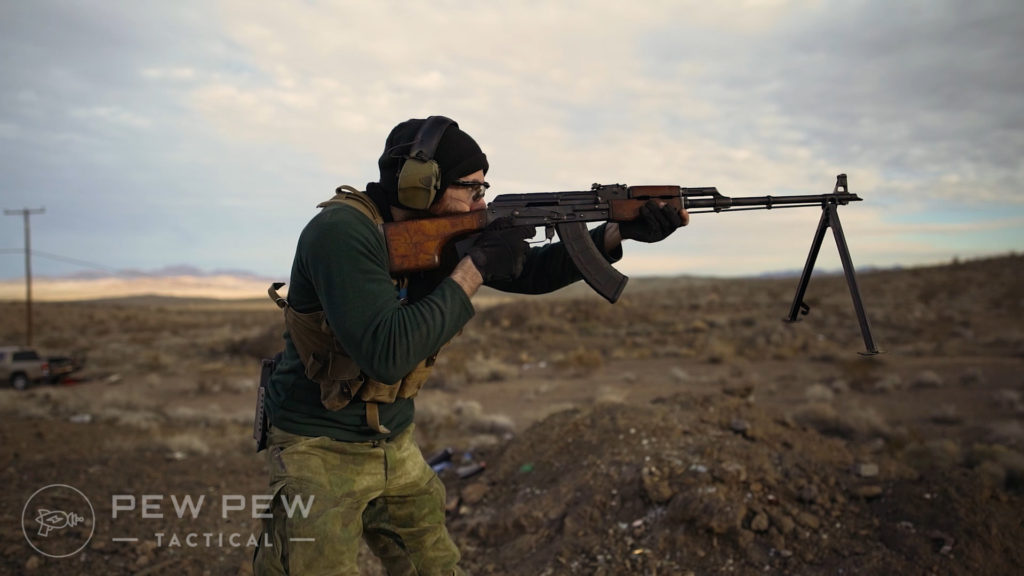
The gun feels very similar to an SKS in that regard – wherein the length of pull on the stock compared to the overall length of the gun is going to throw you off if you’re used to ARs, adjustability or the game-changing western concept known as… comfort. 😎
Obviously, the RPK’s barrel is quite humongous, and as such its center of gravity is going to be way out front the handguards themselves, but the gun’s not necessarily meant to be fired from the shoulder, so that’s not really a fair criticism
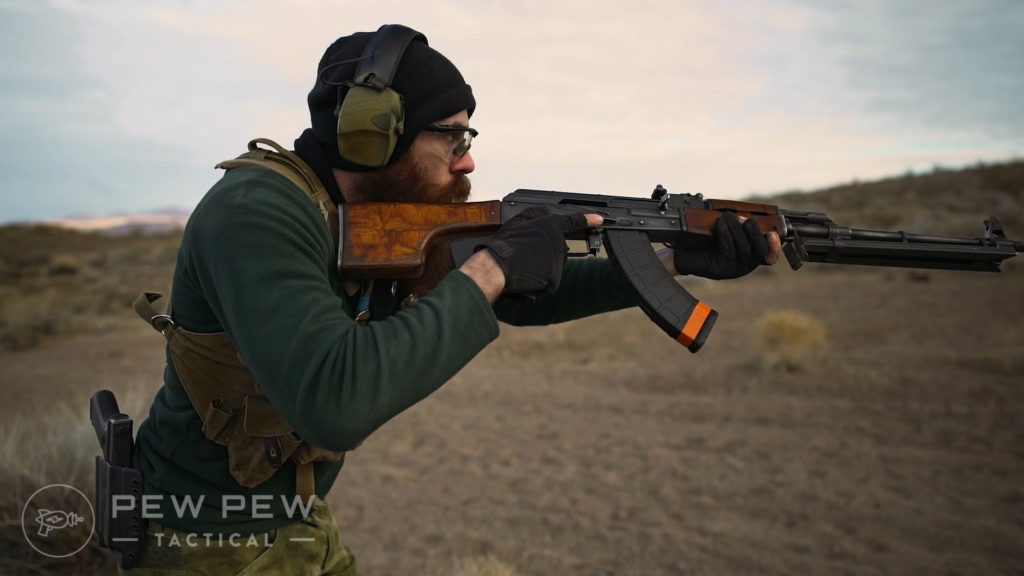
A fun thing to note is that the Romanian RPK is one of the few Combloc RPKs that share specs with the original Soviet guns, meaning that if you want to trick the gun out with aftermarket parts and components meant for the original RPK — they should drop right in here.
This stands in contrast to the Yugo and Serb made Zastava RPKs which utilize an entirely different rear trunion for the stock, among other differences.
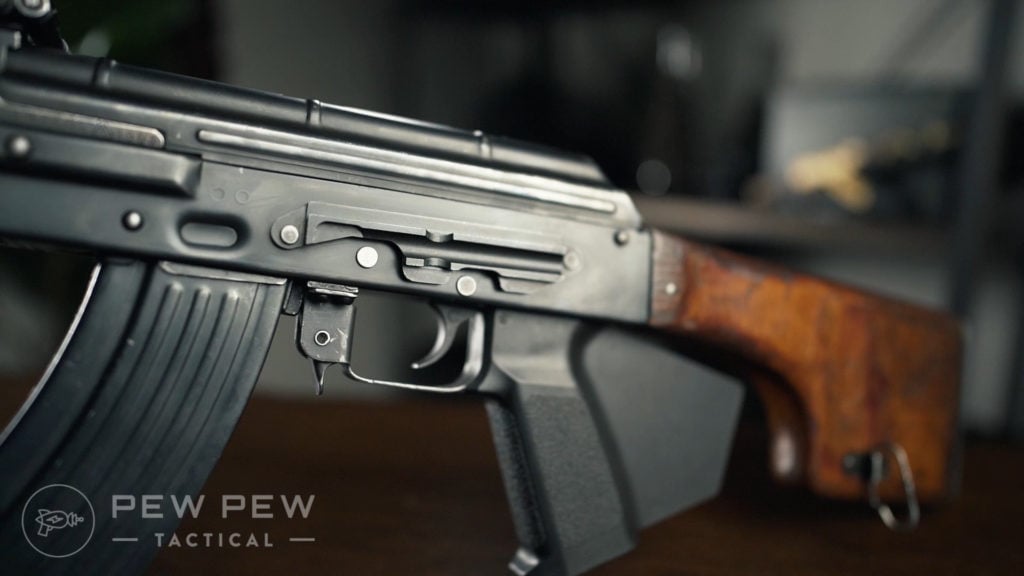
While we didn’t bother shooting groups with what’s essentially a civilian version of a support weapon, anecdotal evidence suggests that shooting from the bipod does indeed effect point of impact, as it’s mounted directly to the barrel itself.
Again, maybe something to be aware of if you’re concerned about accuracy whatsoever, but we weren’t – this is a fun range toy to burn mags through, not a precision weapon.
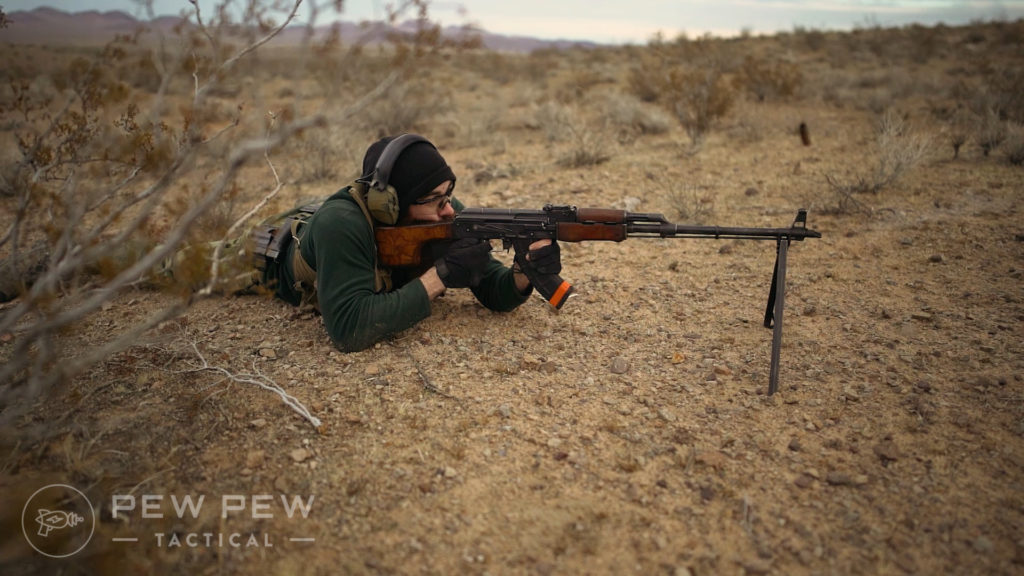
The trigger itself is pretty decent and has relatively minimal creep and takeup before breaking.
Of particular note is that Atlantic is totally willing to ship these to California as long as you slap on a grip fin bought from them to make the gun featureless – which we quite enjoy.
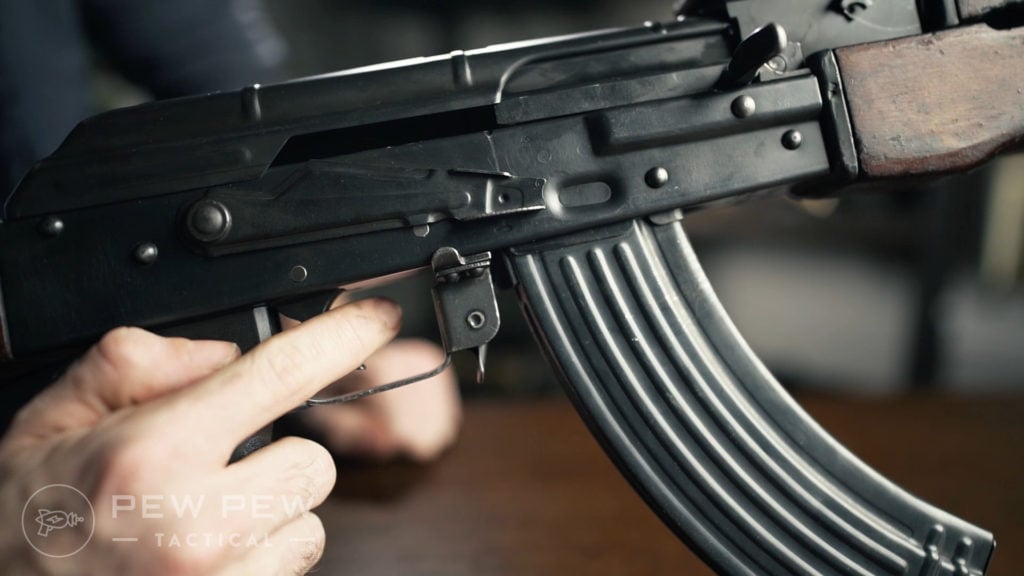
However, compared to an AR where a grip fin doesn’t feel that different once you’re used to it, fins on AKs can feel downright odd, and are going to change the angle at which your finger engages the trigger if you’re following proper shooting technique.
It doesn’t lessen the fun of blasting away on this thing too much, but be aware all the same.
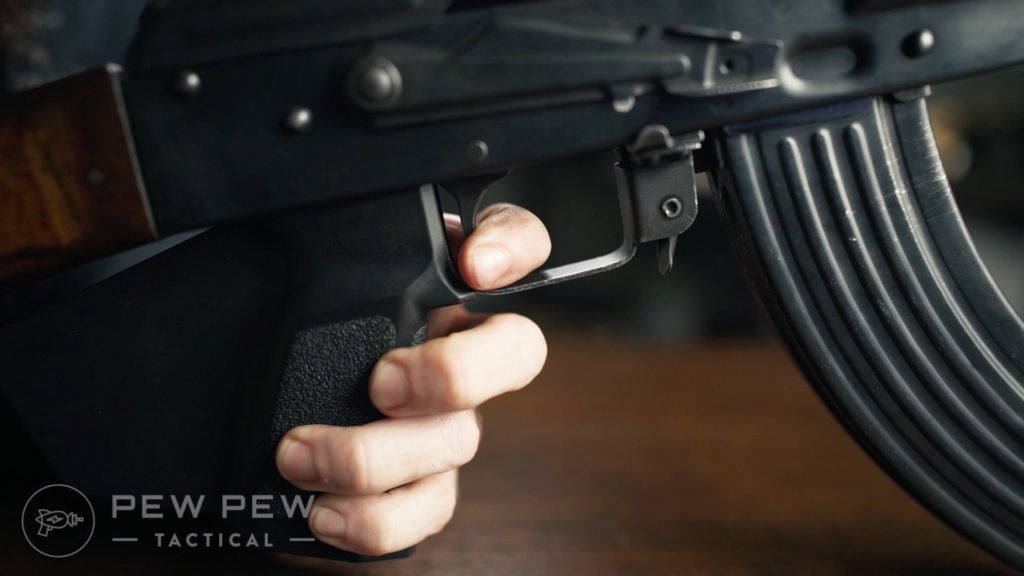
By the Numbers
Reliability 5/5
Surprising no one, the Romy RPK ate every shitball combloc lacquered-cased 7.62×39 round we fed it with zero issues. It’s an AK at heart – were you expecting anything less?
Accuracy 3/5
Perhaps this isn’t quite fair as we didn’t spend a lot of time gauging accuracy or even bother shooting groups, but the 3/5 score is meant to reflect the point of impact when shooting off the bipod.
The irons are reasonably accurate without adjustment, but you’re definitely going to notice a difference once you’re leaning into the bipod that’s mounted directly to the barrel.
Ergonomics 3/5
Again, it’s an AK with a huge ass barrel. Ergonomics are not it’s strong point off the shoulder, but the gun is a breeze to shoot from the bipod or in the prone position.
Its center of gravity is quite a bit forward of a standard AK, but this is mitigated by using the gun in a way similar to its intended role.
Looks 5/5
The gun is downright hot, and there’s no denying it. Atlantic did an amazing job matching the overall wear and tear on the American-made parts with the authentic patina of the MD-64 parts kit the rifle is built around. Bravo!
Customization 3/5
While RPK aftermarket accessories are available, you’re going to be a bit limited. In theory, the rifle should be able to accept a host of Zenitco products if you’re brave enough to throw down the cash for them (and partake in the modifications necessary to get them to fit correctly), but overall, this probably isn’t why you’re taking a serious look at this gun.
Bang for the Buck 4/5
For dorks like us, snagging a rad piece of Commie history for a little over a grand is a steal, and the gun itself as a pleasure to shoot. If that sounds up your alley, we’d recommend keeping a close eye on Atlantic – as the Romanian RPKs go quite quickly when they’re available!
Overall 4/5
Parting Shots
All in all, the Romanian RPK is another super cool piece of history if you’re at all into AKs and cold war communist gats, as I definitely am.
At about $1,200 when they’re in stock, you’ll have to decide if this collector’s piece is worth the wallet pain yourself.
Prices accurate at time of writing
Prices accurate at time of writing
-
25% off all OAKLEY products - OAKLEY25
Copied! Visit Merchant
But considering actual Soviet-made RPKs are essentially unobtanium, this is likely going to be your best bet if you’re trying to snag something closely related to one of the world’s first magazine fed squad automatic weapons.
Which of you throw down the cash on historically relevant firearms? Would you like to see us continue to play with old gats? Let us know in the comments below! For some more awesome Combloc you can feel, take a look at the Best AK-47s!
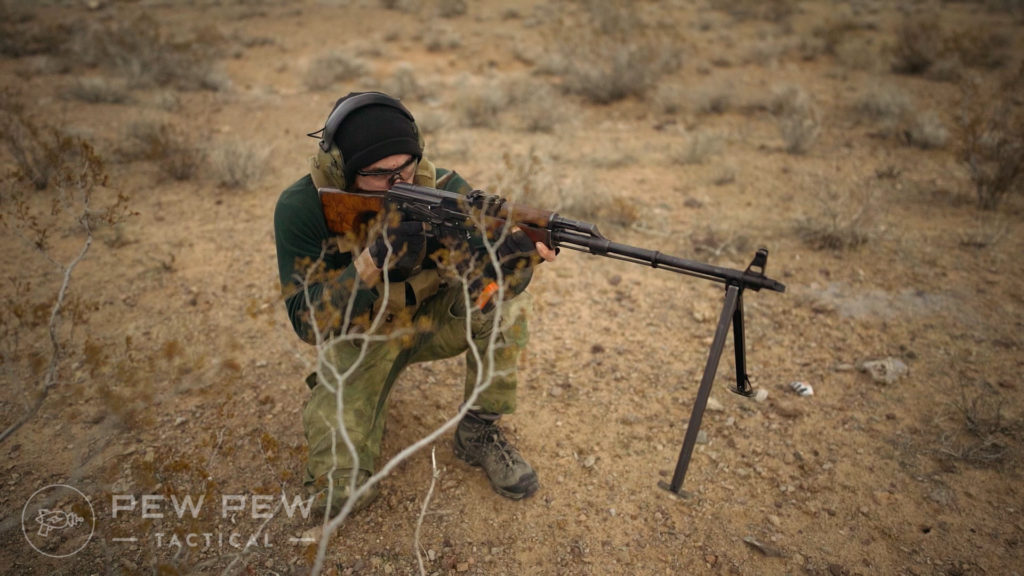

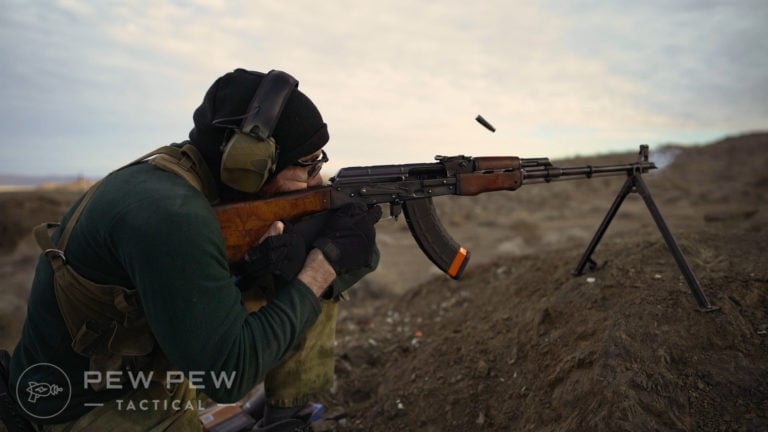














6 Leave a Reply
This is the 1st rifle I got about 5 years ago. Looking through a gun store and just had to pick it up. As I was checking out someone called in trying to reserve it! ahaha, fun to shoot!
Keep talking about guns like this ! These guns are so cool and neat!
We will! We got some cool ones lined up, stay tuned!
I purchased a Romanian Paratrooper RPK kit that I hope to have built in the next few months. More AK-47 and combloc content please!
I went with the Yugo RPK and it's ribbed barrel for my increased pleasure.
A nice slice of history, thank you.